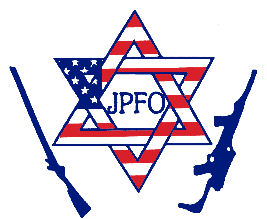“Die for a Tie” — How the Korean War Began
After two world wars with a depression in between, none of which Americans had submitted to voluntarily, President Harry S Truman had some bad news. If we didn’t set off immediately to fight communists in Korea, they would shortly invade the United States. That this was recognized as patent nonsense is perhaps suggested by the fact that, once again, Americans had to be drafted if they were going to go off and fight. The Korean War was waged in supposed defense of the way of life in the United States and in supposed defense of South Korea against aggression by North Korea. Of course it had been the arrogant genius of the Allies to slice the Korean nation in half at the end of World War II.
On June 25, 1950, the north and the south each claimed the other side had invaded. The first reports from U.S. military intelligence were that the south had invaded the north. Both sides agreed that the fighting began near the west coast at the Ongjin peninsula, meaning that Pyongyang was a logical target for an invasion by the south, but an invasion by the north there made little sense as it led to a small peninsula and not to Seoul. Also on June 25th, both sides announced the capture by the south of the northern city of Haeju, and the U.S. military confirmed that. On June 26th, the U.S. ambassador sent a cable confirming a southern advance: “Northern armor and artillery are withdrawing all along the line.”
South Korean President Syngman Rhee had been conducting raids of the north for a year and had announced in the spring his intention to invade the north, moving most of his troops to the 38th parallel, the imaginary line along which the north and south had been divided. In the north only a third of available troops were positioned near the border. Nonetheless, Americans were told that North Korea had attacked South Korea, and had done so at the behest of the Soviet Union as part of a plot to take over the world for communism.
Arguably, whichever side attacked, this was a civil war. The Soviet Union was not involved, and the United States ought not to have been. South Korea was not the United States, and was not in fact anywhere near the United States. Nonetheless, we entered another “defensive” war. We persuaded the United Nations that the north had invaded the south, something the Soviet Union might have been expected to veto had it been behind the war, but the Soviet Union was boycotting the United Nations and took no interest. We won some countries’ votes at the United Nations by lying to them that the south had captured tanks manned by Russians. U.S. officials publicly declared Soviet involvement but privately doubted it.
The Soviet Union, in fact, did not want a war and on July 6th its deputy foreign minister told the British ambassador in Moscow that it wanted a peaceful settlement. The U.S. ambassador in Moscow thought this was genuine. Washington didn’t care. The North, our government said, had violated the 38th parallel, that sacred line of national sovereignty. But as soon as U.S. General Douglas MacArthur got the chance, he proceeded, with President Truman’s approval, right across that line, into the north, and up to the border of China. MacArthur had been drooling for a war with China and threatening it, and asked for permission to attack, which the Joint Chiefs of Staff refused. Eventually, Truman fired MacArthur. Attacking a power plant in North Korea that supplied China, and bombing a border city, was the closest MacArthur got to what he wanted.
But the U.S. threat to China brought the Chinese and Russians into the war, a war that cost Korea two million civilian lives and the United States 37,000 soldiers, while turning Seoul and Pyongyang both into piles of rubble. Many of the dead had been killed at close range, slaughtered unarmed and in cold-blood by both sides. And the border was right back where it had been, but the hatred directed across that border greatly increased. When the war ended, having accomplished no good for anyone but weapons makers, “people emerged from a mole-like existence in caves and tunnels to find a nightmare in the bright of day.”
David Swanson is the author of “War Is A Lie” http://warisalie.org
http://facebook.com/pages/David-Swanson/297768373319
Leave a Reply
You must be logged in to post a comment.




 NoScript extension
NoScript extension
